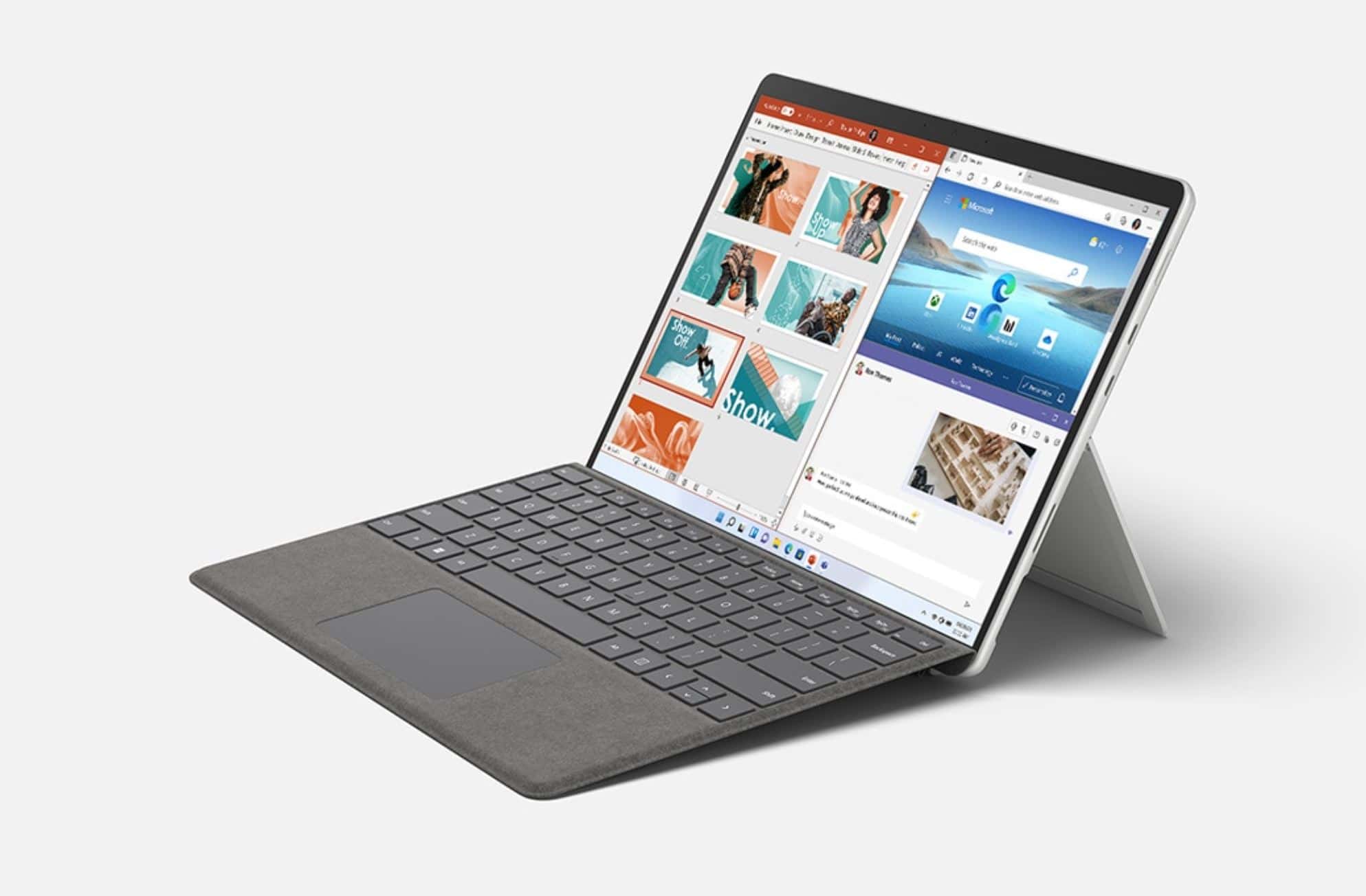
What this will actually mean isn’t too clear, as support for HDR can be a bit limited on Windows, and Dolby Vision is an even more rare subset of HDR profiles. The display supports HDR video through Dolby Vision, though I had to toy around with settings to enable it as the default Vivid color profile and Adaptive color feature appeared to have locked out HDR support. It also gets bright enough for outdoor use, though the glossy finish does leave it prone to reflections. Microsoft has trimmed the bezels around the display a bit, especially on the sides, allowing it to upgrade from the 12.3-inch display of the Surface Pro 7 to a 13-inch, 3:2 display with a 2880 x 1920 resolution.

It also includes two forward-facing speakers that pump out some rich, full sound at an impressive volume level. The firm kickstand holds its position well, making it easy to get the display angled conveniently – upright for hands-free viewing or down low for writing on.

The tablet portion of the Surface Pro 8 is light at 1.96 pounds and plenty versatile. It’s hard to comprehend how Microsoft continues to sell the Surface Pro line with its keyboard cover and stylus as a separate purchase. The Surface Pro 8 is an elegant machine, though it’s only fully realized when grabbing the keyboard cover and stylus bundle. A traditional laptop offering similar specs will generally cost considerably less, so let’s see how Microsoft’s Surface experience justifies what it’ll cost to get. Microsoft’s premium 2-in-1 experience is remaining just that: premium.

All of those prices are before adding on a keyboard or stylus, which Microsoft sells as a bundle for $279 extra. That can leap to $2,599 for a model with an Intel Core i7-1185G7, 32GB of RAM and a 1TB SSD.

The Surface Pro 8 starts at $1,099 for a base model with an Intel Core i5-1135G7, 8GB of RAM, and 128GB of storage. This update comes with thinner bezels, an upgraded display, a new pen experience, and a few other hardware improvements. The Microsoft Surface Pro 8 is a considerable upgrade for the series, which had been stagnating for the past few years and lacked an update since the Surface Pro 7 in 2019.


 0 kommentar(er)
0 kommentar(er)
